I visited the site where Empress Elisabeth, "Sisi," of Austria was murdered.
Historic sites #1: Hotel Beau-Rivage Geneva
Let me take you back to Geneva, that wonderful city where I have gone back to so many times before. I have already shared pictures of my train journey through Europe, and I showed you photos of the town itself when I wrote about my memories of my work there. Today, I will take you back in time to the sad events in Geneva on September 10, 1898.
After a full-day conference at the Geneva Centre for Security Policy in the Maison de la Paix, I was happy that I could take off my mask, put on my winter coat, and walk towards the city center in the cool October evening. As an Associate Fellow to the GCSP, I usually visit Geneva a few times per year to teach or participate in meetings. But this time, the pandemic has changed everything, and it has been two years since my last visit to this pleasant city.
On the banks of Lake Geneva, I passed two famous classic 19th-century hotels with views of the Alps. First, Le Richemond, the hotel where the Aga Khan, Clark Gable, Luciano Pavarotti, and even one of the early subscribers to this newsletter have all stayed. The hotel prides itself also on having the ninth most expensive suite in the world.
A few steps further towards the lake is the hotel Beau-Rivage Geneve. Built in 1865, the luxury five-star hotel is ten years older than Le Richemond. Their most famous accommodation is the Sisi Terrace Suite, described as:
A 125m² King Size Bed Large bathroom with Hammam, Bathtub and Shower View on Jet d'eau.
The legend of Empress Sissi, one of the most famous guests of Beau-Rivage, is kept alive. Dressed up with objects that belonged to the Empress, this 970 sqft suite is a witness in history. A private terrace, on which Sissi enjoyed walking, overlooks the lakeside. The white marble bathroom features a Jacuzzi bathtub and a steam room.
A one-night stay costs nearly 5,000 dollars, but I understand it includes one box of macarons in violet flavor, which makes this an offer you can't refuse. The room is indeed a witness to history since it was here, in 1898, that Empress Elisabeth of Austria died after an Italian anarchist attacked her. The murder of the popular Sisi shocked the world.
I guess many of you will think of the image of a teenage Romy Schneider in colorful dresses when you hear the name Sisi; you are not alone. In many European countries, no Christmas seems possible without her Sissi trilogy (Sissi spelled with double-s) broadcasted again on television. Romy Schneider became synonymous with Sissi, which is why she later loathed her role and claimed, "Sissi sticks to me like porridge." Although the films play in the mid-nineteenth century, the script, acting, and especially the colors of the production give it much more of a 1950s feel.
When I lived in Vienna, I was daily for my work in the Hofburg, the palace complex that was the political heart of the monarchy until 1918. Every day, I saw families line up to visit the Sisi Museum in the Hofburg that keeps her legend alive. I once joined them and still remember seeing her fitness equipment that is part of the permanent exhibition.
Her famous waist size
Sisi took her exercise very seriously, and she had every castle she lived in equipped with a gymnasium. She also had mats and balance beams installed in her bedroom to practice on them each morning. In addition, the imperial villa at Ischl, which you can also visit, was fitted for her with gigantic mirrors, a bit like you would nowadays see in your gym.
She kept her weight at 50 kilos, which she achieved by combining exercise and a highly rigid diet, which sometimes included days of almost complete fasting. It made her famously thin, but she wanted to reduce her waist even further to only 40 cm (16 inches) in circumference, so she wore specially made leather corsets from Paris that required an hour of strenuous lacing. Imagine that: a square of 10 by 10 centimeters, the length of my index finger.
This portrait of Elisabeth depicts her long hair. It was painted by Franz Xaver Winterhalter, 1864, a name that some readers of this newsletter will remember as the man who painted Anna Masséna, also known as the Princess d'Essling and Duchess of Rivoli, and perhaps best known for the Annas hummingbird that is named after her. (If you missed it, read that story here). The portrait is one of two so-called "intimate" portraits of the empress; although its existence was kept a secret from the general public, it was the emperor's favorite portrait of her and kept opposite his desk in his private study.
Looking at the portrait, I can imagine why the Empress often complained of headaches caused by the weight of her abundant and extremely long hair, which needed two or three hours of daily care. Finally, at thirty-two, she decided she did not want the public image of her eternal beauty challenged. Therefore, she did not sit for any more portraits and would not allow any photographs.
In 1898, the 60-year old Elisabeth was the longest-serving Empress of Austria at 44 years. After several dramatic events, including the murder-suicide of her only son and his mistress at Mayerling, she had withdrawn from all court duties. Instead, Elisabeth traveled widely in European and Mediterranean countries. Despite warnings of possible assassination attempts, she traveled incognito to Geneva, where she stayed at the Hotel Beau-Rivage, where someone revealed that the Empress of Austria was their guest.
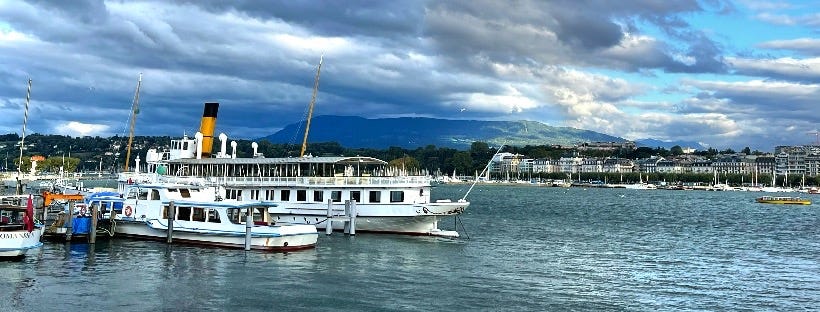
When boarding the steamer "Genève," an Italian anarchist stabbed the Empress in the heart with a sharp weapon. Briefly, her famously tight corset hid the seriousness of her wound. But shortly afterward, she fainted was brought back to her room in the Beau-Rivage, where she died soon after. It was shocking news in an age where terrorists targeted many crowned heads of Europe; this was the first attack on a female monarch. The murder led to a political crisis in Europe, with tensions rising between countries and between conservatives and socialists. Meanwhile, in Geneva, crowds queued to sign the condolence book at the Hotel Beau-Rivage.
I took a few photos of the hotel, crossed the street to the boulevard along the lake to see where Sisi had just boarded the steamer, and walked on to my more modest hotel for my last night in Geneva.
If you are a paying subscriber: thank you for your support!
I write this newsletter because I believe that together we can do better on this beautiful but fragile planet.
This newsletter is an independent production. Accordingly, I have never accepted any advertising offers. I also aim to make as many editions as possible available for free.
Support from those who can afford it makes this independent newsletter available to all.
You can join this initiative by taking a paid subscription.
If the cost of this newsletter ($6/month, $60/year) would create any financial strain, please stay on the free list; I value all readers.
The back page:
Notes:
https://www.beau-rivage.ch/en/ (And no, I don’t get any payment from any hotel in Geneva for this post, it is just that I believe you may like to see the picture of the Sisi Suite)
https://en.wikipedia.org/wiki/Le_Richemond
https://www.habsburger.net/en/chapter/following-sisis-footsteps-imperial-park-bad-ischl
https://www.sisimuseum-hofburg.at/en/about-the-location/a-brief-history
https://en.wikipedia.org/wiki/Sissi_(film)
https://www.history.com/news/the-tragic-austrian-empress-who-was-murdered-by-anarchists
https://www.unofficialroyalty.com/assassination-of-empress-elisabeth-of-austria-1898/
https://en.wikipedia.org/wiki/Empress_Elisabeth_of_Austria
https://www.swissinfo.ch/eng/society/series--anarchists-in-switzerland---3_-empress-stabbed-in-the-heart-/44844170





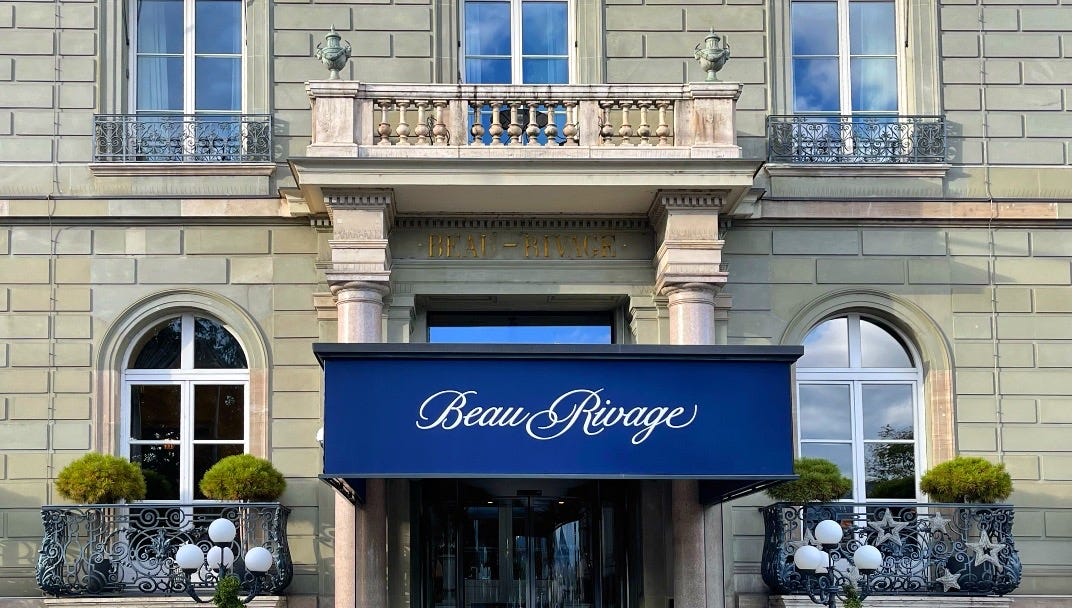
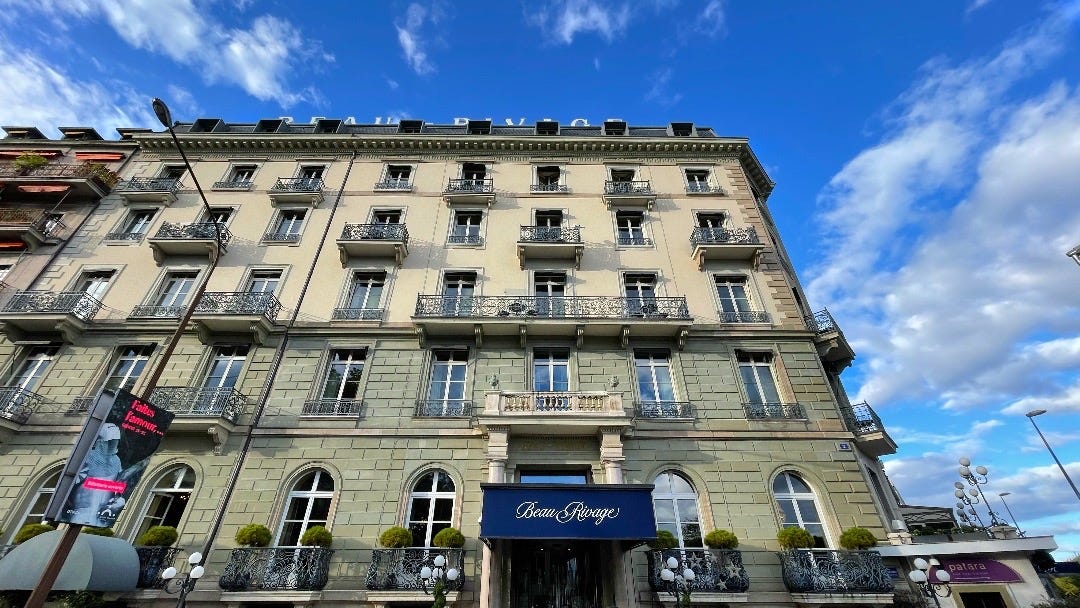
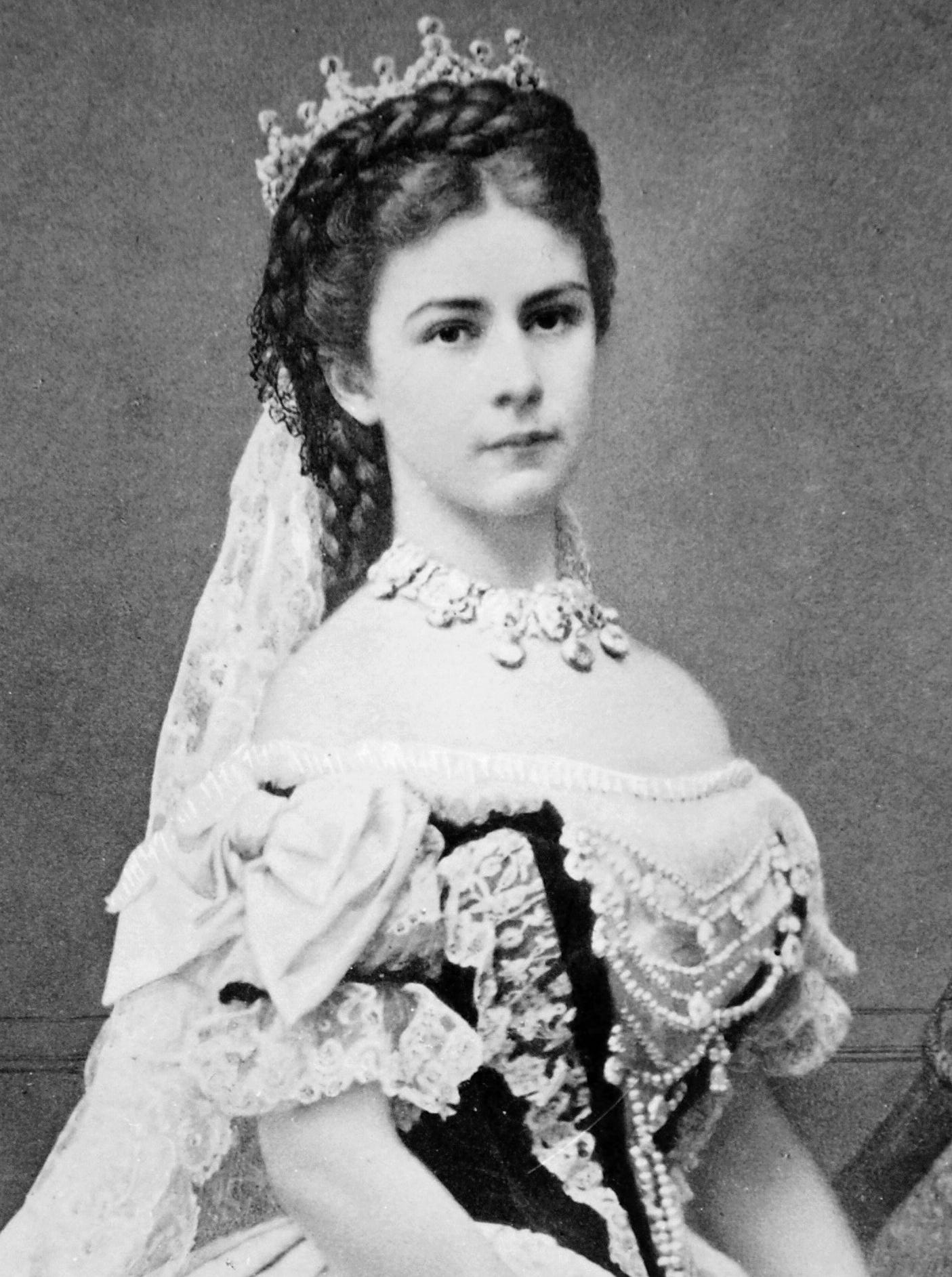
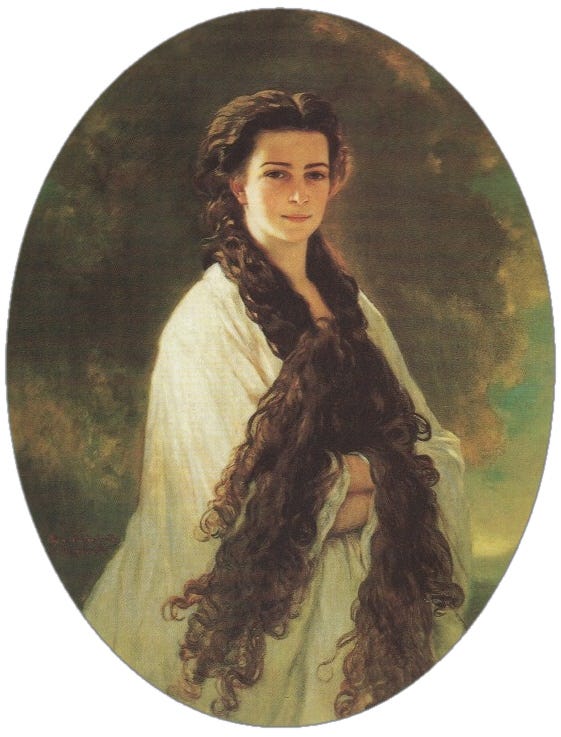

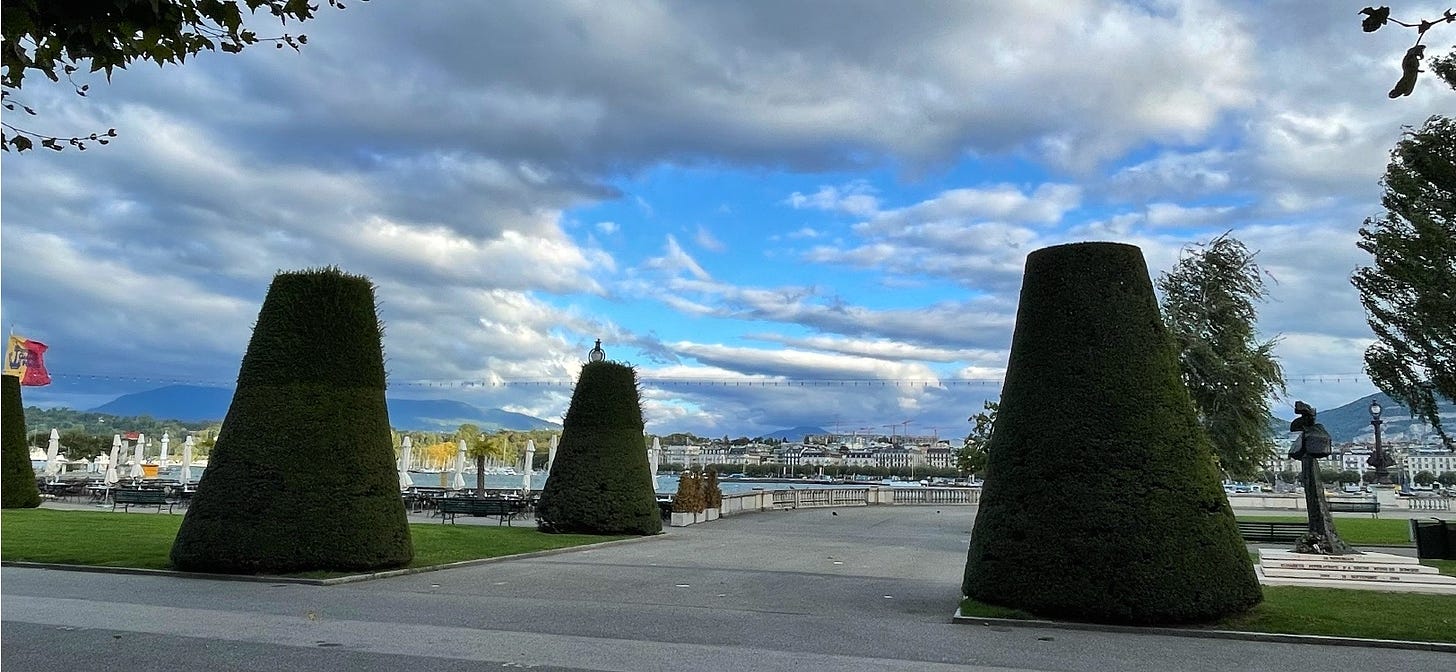
Thank you for this fascinating journey. I attached two pics of my “room with a view” from Le Hotel Richemond to your Twitter post.
For me it's mindboggling that peoples in a position of political power, stardom or by birth, become a target. Sissi was well aware then by going incognito, which did not help. I think we have deteriorated even more. Currently peoples are spending billions on personal protection.
Thank you Alexander, I did not know about Sissi. It is good to learn this history of her tragic demise. Exquisite photos.